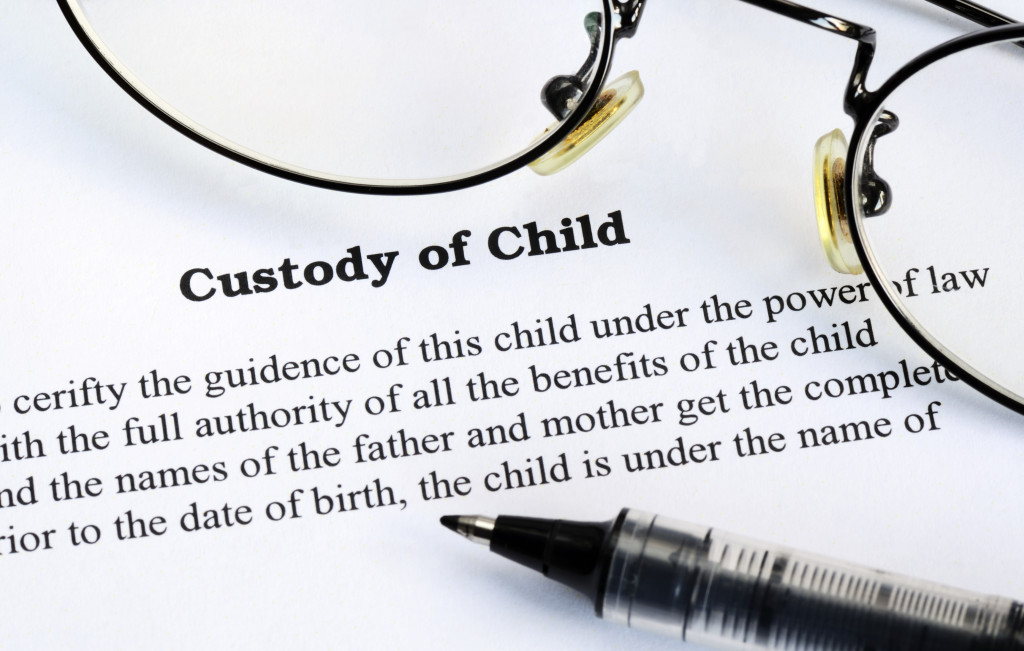- Understanding the different types of custody is crucial for a successful case.
- Cooperation and communication with your ex-partner is essential for your child’s well-being.
- Developing a detailed parenting plan can provide structure and show preparedness to the court.
- Putting your child’s needs first, rather than your desires, is key in deciding during custody battles.
- Seeking professional legal assistance from an experienced custody attorney can greatly benefit your case.
Child custody battles can be emotionally exhausting and legally complex. Navigating through the convoluted terrain of custody rights and parenting plans is never easy. To ensure the best possible outcome for both yourself and your children, here are five essential tips you need to consider.
1. Understand the Different Types of Custody
Knowing the different types of custody will empower you to approach your case logically and calmly. The court’s primary consideration is always the child’s best interest. Familiarize yourself with these terms and understand what each type of custody entails, as this knowledge is crucial when discussing arrangements and making agreements.
Here are the types of custody that you have to understand:
Legal Custody

Legal custody grants a parent the right to make important decisions on behalf of their child, such as those regarding education, healthcare, and religion. Sole legal custody refers to the situation where one parent has the sole authority to make important decisions without requiring input or involvement from the other parent.
On the other hand, joint legal custody grants both parents equal authority in making decisions. This type of custody requires effective communication and cooperation between the parents, even if they do not have a good relationship.
Physical Custody
Physical custody pertains to the primary residence of the child, which can either be solely with one parent or jointly shared between multiple households.
Sole physical custody refers to the arrangement where the child primarily resides with one parent, while the other parent is granted visitation rights. Joint physical custody allows for equal or near-equal amounts of time spent with each parent.
Sole Custody
Sole custody entails granting one parent exclusive legal and physical custody of the child. This empowers the parent with sole decision-making authority, and the child predominantly resides under their care.
Sole custody is typically granted in cases where one parent is deemed unfit or incapable of providing for the child’s best interests, such as in cases of abuse, neglect, or substance abuse. The non-custodial parent may have limited or supervised visitation rights in these situations.
Joint Custody
Joint custody is a type of shared custody where both parents have equal or near-equal rights and responsibilities in making decisions for their child. This can refer to either legal or physical custody or both.
In joint legal custody, both parents have an equal say in major decisions affecting the child’s welfare. In joint physical custody, the child spends significant time with each parent.
2. Cooperate and Communicate with Your Ex-Partner
Open lines of communication are vital. This doesn’t mean you need to agree on everything, but you should be willing to negotiate and compromise. Your child’s welfare should be the focal point of discussions, not your relationship issues with your ex.
Cooperation isn’t a sign of weakness but a necessity for your child’s well-being. Demonstrating a willingness to work with your ex can also be viewed favorably by the court, positively impacting the outcome of the custody battle.
3. Develop a Parenting Plan
Creating a detailed parenting plan is instrumental. This should outline how you and your ex-partner intend to share and handle responsibilities related to your child. It usually includes schedules, education plans, healthcare provisions, and dispute-resolution methods.
Having a well-thought-out plan provides a clear roadmap for co-parenting and shows the court that you have considered and prepared for the practical aspects of raising your child post-divorce.
4. Prioritize Your Child’s Needs

Your child’s needs should always take precedence. Understand their feelings and consider their preferences, schooling, social life, and overall well-being. It’s essential to create an environment where your child feels loved, secure, and supported, regardless of the custody arrangement.
By focusing on your child’s needs rather than your desires, you not only foster their emotional health but also strengthen your position as a responsible and caring parent in the eyes of the court.
5. Seek Professional Legal Assistance
Legal battles can be daunting, and child custody cases are no exception. Child custody’s legalities are complex and multifaceted, requiring a comprehensive understanding of family law. This is where a knowledgeable custody attorney becomes invaluable.
An experienced custody attorney understands the nuances of child custody cases and can provide essential legal advice and representation. Their expertise can guide you through the legal process, helping you make informed decisions while safeguarding your rights and interests as a parent.
In Closing
Navigating a child custody case requires a combination of emotional readiness, open communication, detailed planning, and professional legal assistance. By following these five crucial tips and securing the services of a seasoned custody attorney, you’re not only investing in your legal battle but, more importantly, ensuring the well-being and happiness of your child in the years to come.


